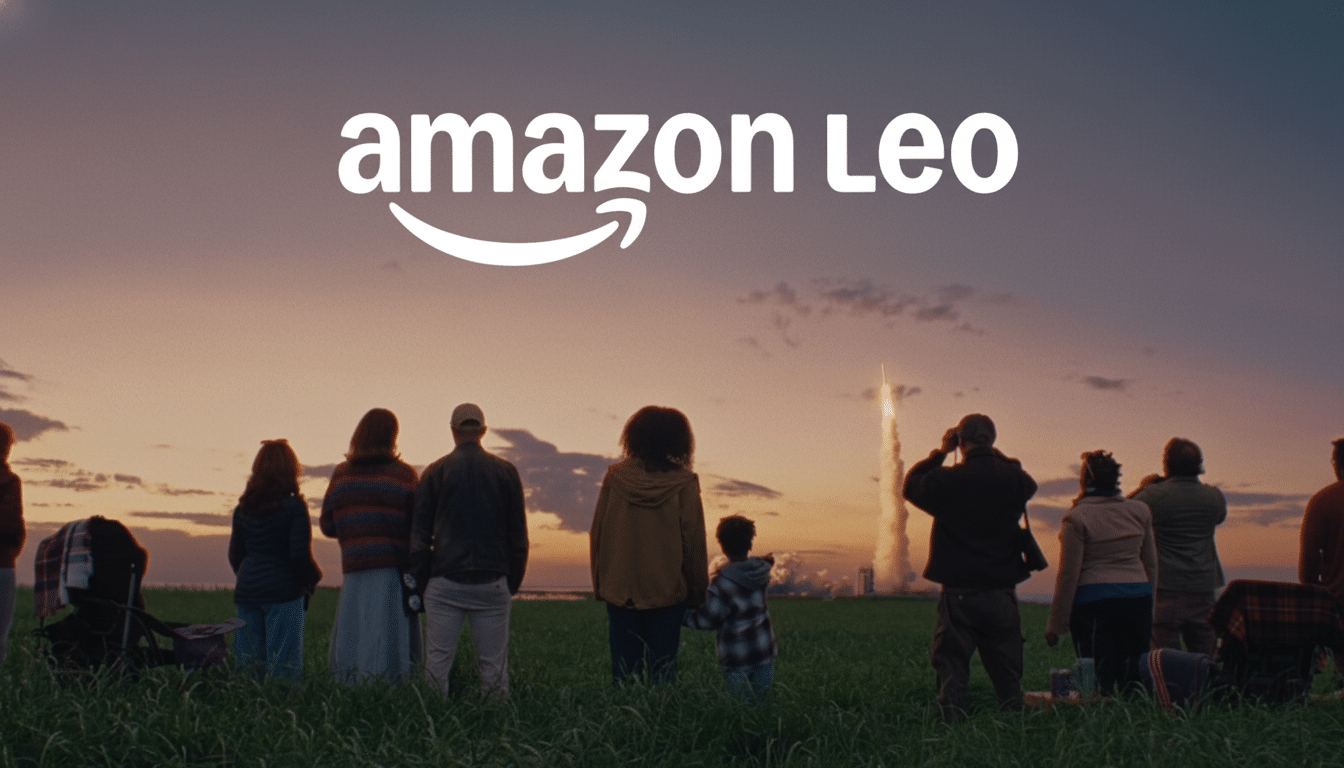Amazon has rechristened its satellite internet venture from Project Kuiper to Leo, a reference to low Earth orbit, scrubbing earlier promises about “affordable” access from public materials without notice. The new messaging focuses on performance, home connectivity, and business readiness, a strategic shift to coincide with an emphasis on higher-value customers and commercial contracts.
Why Amazon Is Rebranding Its Constellation
Project Kuiper kicked off in 2019 as an internal codename, and Amazon has long hinted that the name would change once the service approached the market. The new brand, Leo, is literal and industry-native — low Earth orbit is where the company’s 3,236-satellite constellation will operate under an authorization by the Federal Communications Commission.

It also helps in branding terms: It puts further daylight between the program and a “project” phase, establishing it as part of a product line that needs to win customers today. Amazon last year committed to a buildout valued at over $10 billion, signed an unprecedented roster of launch contracts spanning ULA’s Vulcan, Arianespace’s Ariane 6, and Blue Origin’s New Glenn, and completed early on-orbit tests. Real revenue will be needed for a production ramp — and the new narrative reflects that urgency.
From Low-Cost Promise to Enterprise Pitch
Amazon’s earlier FAQs and marketing had pointed to affordability as one of its guiding principles; they even inspired comparisons between the new model for Vizio and Amazon’s playbook for low-cost devices. Those references have been removed. The new Leo site reinforces “fast, reliable internet,” 4K streaming, seamless video calls, and “enterprise-ready” scalability. Rural and remote are still referenced, but more as side scenarios than the headline mission.
It represents an interesting turnabout from earlier talk of closing the digital divide with budget-friendly hardware. Amazon said its regular consumer terminal could be manufactured for less than $400, and a smaller version targeted at under $100 to make. Today’s copy eschews pricing altogether, a clear indicator that unit economics and go-to-market priorities are targeting customers who will pay more for guaranteed throughput, uptime, and SLAs.
Reading the Market and Regulatory Clock
LEO broadband continues to be brutally capital intensive. Satellites have a finite life, launch slots are limited, and rollout of the ground network can be as expensive as going to space. The FCC is requiring Amazon to build out a large portion of its constellation by a mid-decade milestone, followed later in the decade by the rest, which should force timelines and spending.
Offsetting that dynamic, higher-margin segments — enterprise connectivity, cellular backhaul, mobility, government, and disaster response — can accelerate payback versus low-price residential plans only. Industry analysts at NSR and Quilty Space have also recently pointed out that non-consumer use cases will probably generate most of the revenue growth in LEO during this decade, even as household adoption grows.

Competition from Starlink and Other Providers
SpaceX’s Starlink has already attracted more than 2 million subscribers worldwide, with hardware that costs a few hundred dollars and basic service rates typically in the teens per month, depending on region and plan. Starlink has also ventured into aviation, maritime, and enterprise connectivity — categories that come with premium pricing and raise the stakes of its competition with Leo.
By contrast, Eutelsat OneWeb is aiming for enterprise and government, and Telesat’s Lightspeed lineup is primarily targeting network operators and mobility. Amazon refocusing on “enterprise-ready” is playing to where the market has traction but also areas in which Leo can make the most of Amazon’s wider ecosystem. You can anticipate that tight integration with AWS networking, edge computing, and content delivery will become part of the pitch for multinational customers and public-sector buyers.
Implications for Access, Pricing, and Service Costs
Reprioritizing premium segments does not mean rural and underserved are not in the game but implies they will be addressed through partnerships and subsidies rather than everyday low pricing. In the U.S., from where the $42.5 billion BEAD initiative originates, fiber-first programs help promote LEO connectivity as a way to extend coverage to hard-to-reach areas, add backup capabilities on a rapidly deployable basis, or act as interim service while complementary terrestrial builds occur.
The equity gap has proved stubborn: the World Bank and ITU stand among many organizations that have established strong links between broadband access, education, health, and GDP. If Leo’s affordability promise is no longer explicit, plugging last-mile holes will likely depend on carrier wholesale agreements, government contracts, and the sort of community deployments that mix public funding with private service tiers.
What to Watch Next for Leo’s Market Strategy
Key signals will include pricing of hardware for consumer terminals, the mix of customers announced, and any AWS-led bundles for enterprises or governments. Be on the lookout for service-level commitments — latency, throughput, uptime — across both residential and business plans, and whether Amazon introduces targeted pricing for schools, clinics, and emergency services.
For now, the message is loud and clear: Leo is transitioning from aspirational access to performance-first service. In a LEO sales environment of scale, speed, and economics, Amazon seems to be targeting the slices that can finance the constellation — and then perhaps finance broader inclusion post-launch.

